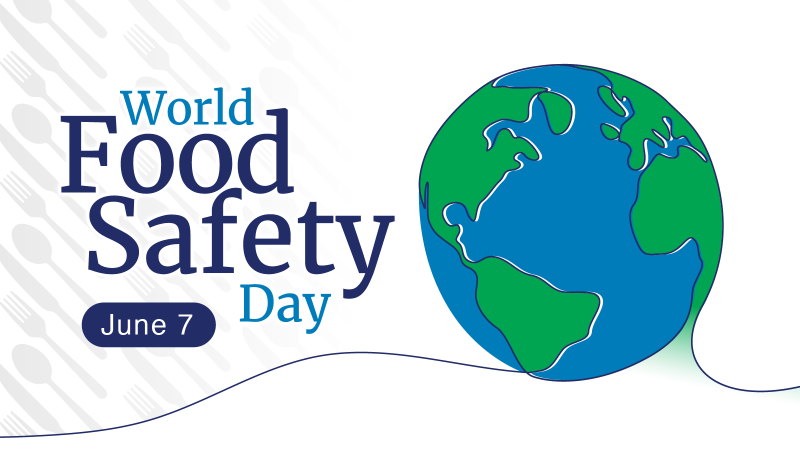Introduction: World Food Safety Day, observed annually on June 7th, highlights the critical importance of food safety and the measures necessary to prevent foodborne illnesses. In 2024, the theme underscores the transformative role of technology in ensuring food safety from farm to table. As the global population grows and supply chains become more complex, leveraging technological innovations is vital for maintaining food safety standards and protecting public health.
The Growing Need for Food Safety: Food safety concerns have escalated with globalization, urbanization, and changes in food production and consumption patterns. Contaminants, pathogens, and the improper handling of food can lead to severe health issues and economic losses. The integration of technology offers robust solutions to these challenges, enhancing food safety at every stage of the supply chain.
Technological Innovations in Food Safety:
- Blockchain Technology:
- Traceability: Blockchain provides an immutable ledger that records every transaction in the food supply chain. This ensures transparency and traceability, allowing stakeholders to track the journey of food products from producers to consumers.
- Accountability: By maintaining detailed records of food handling and storage, blockchain helps identify and address any breaches in safety protocols, thus ensuring accountability among all parties involved.
- Internet of Things (IoT):
- Real-Time Monitoring: IoT devices can monitor temperature, humidity, and other environmental factors in real-time, ensuring that food is stored and transported under optimal conditions. This minimizes the risk of spoilage and contamination.
- Automation: IoT-enabled automation can manage and adjust conditions dynamically, reducing human error and improving overall food safety.
- Artificial Intelligence (AI) and Machine Learning (ML):
- Predictive Analytics: AI and ML can analyze vast amounts of data to predict potential food safety issues before they occur. This proactive approach allows for timely interventions and preventive measures.
- Quality Control: AI-powered image recognition systems can detect defects and contaminants in food products with high precision, ensuring only safe and quality products reach consumers.
- Advanced Sensors and Detection Methods:
- Rapid Testing: Innovations in sensor technology enable rapid and accurate testing for pathogens and contaminants. Portable devices can be used for on-site testing, providing quick results and reducing the time between detection and action.
- Biosensors: These sensors detect specific biological contaminants, such as bacteria and viruses, at very low concentrations, enhancing food safety monitoring.
- Data Analytics and Big Data:
- Data Integration: Integrating data from various sources, including production, processing, and distribution, allows for comprehensive analysis and identification of patterns and anomalies related to food safety.
- Risk Assessment: Big data analytics can enhance risk assessment models, providing insights into potential hazards and improving decision-making processes.
Impact on the Food Industry:
- Enhanced Consumer Trust:
- Technology-driven transparency and traceability boost consumer confidence in food products. Knowing the origin and safety measures taken reassures consumers about the quality of their food.
- Regulatory Compliance:
- Advanced technologies help food businesses comply with stringent regulatory standards and documentation requirements, minimizing the risk of non-compliance and associated penalties.
- Efficiency and Cost Savings:
- Automation and real-time monitoring reduce wastage and operational costs, improving overall efficiency in the food supply chain. Preventive measures also lower the costs associated with foodborne illnesses and recalls.
Challenges and Future Directions:
- Integration and Standardization:
- The successful implementation of these technologies requires integration across various systems and standardization of protocols to ensure interoperability and consistency.
- Access and Affordability:
- Ensuring that small and medium-sized enterprises (SMEs) can access and afford these advanced technologies is crucial for widespread adoption and overall food safety improvement.
- Continuous Innovation:
- Ongoing research and development are necessary to keep pace with emerging food safety threats and to develop new solutions that address evolving challenges.
Conclusion: As we celebrate World Food Safety Day 2024, the focus on technology highlights its pivotal role in transforming food safety practices. From blockchain and IoT to AI and advanced sensors, technological innovations are reshaping the food industry, making it safer and more efficient. Embracing these technologies not only protects public health but also enhances consumer trust, regulatory compliance, and economic sustainability. The future of food safety lies in harnessing the power of technology to create a resilient and secure food supply chain for all.





